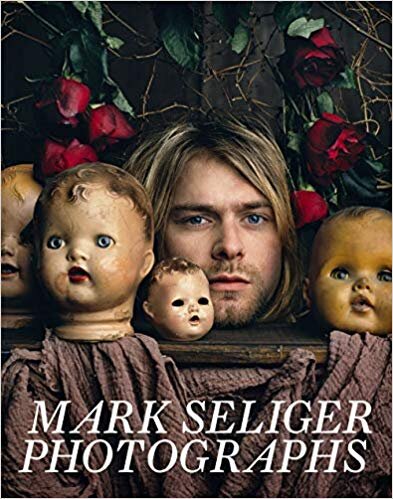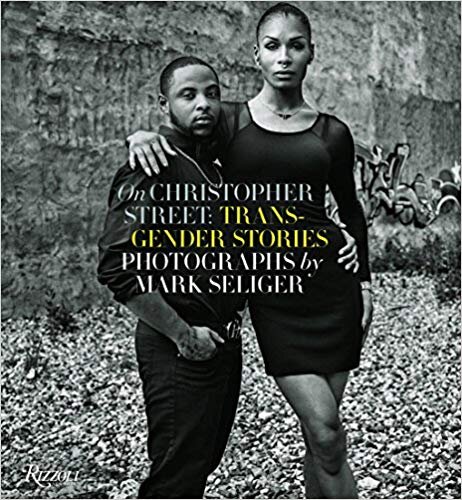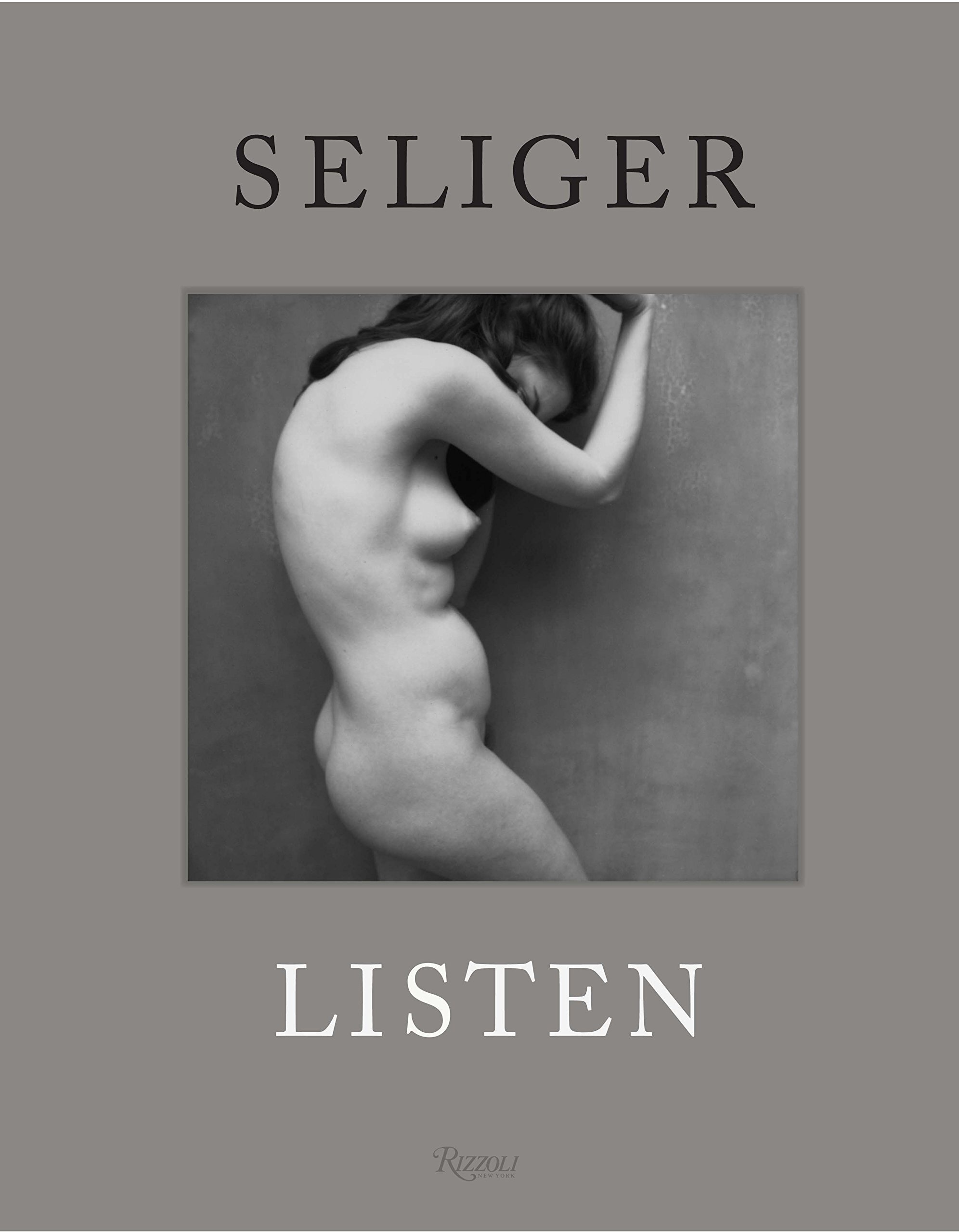Mark Seliger was born in Amarillo, Texas. He was Rolling Stones chief photographer for 20 years, where he shot over 150 covers of silica shoots frequently for Vanity Fair, GQ, Italian Vogue, Harper's Bazaar, L, and other magazines. His advertising work includes projects for Adidas, Anheuser-Busch, Levi's, Netflix, and Ralph Lauren. Seliger received the Alfred Eisenstaedt Award, Clio Grand Prix, the C Award, Cannes Lions Grand Prix, The One Show, ASME, SPG and the Texas Medal of Arts were exhibited in museums and galleries around the world.
His photographs are in the permanent collections at the National Portrait Gallery at the Smithsonian, the Museum of Fine Arts in Houston and the National Portrait Gallery in London.
THE CREATIVE PROCESS
Mark Seliger, Welcome to The Creative Process.
MARK SELIGER
Thank you.
THE CREATIVE PROCESS
So we're at the Five Senses Festival. You were just discussing your book On Christopher Street: Transgender Stories. This is kind of in contrast to some of your portraits of power and celebrity. I know you also have the 401 Projects. Why did you decide to do these two poles of your work?
SELIGER
Well, I've always done personal work, even though that's not necessarily what you're recognized for. That's the work that's going to be the work you pass on. So, my very first book was actually called When They Came to Take My Father, which was based on Holocaust stories and Survivor stories. I've always just loved documentaries. It's really the heart of why I became a photographer. It just so happened that in the world that I decided to work in the other 50 percent is your commercial work, which you try to keep in the same theme of thread, in terms of portraiture. It may vary in terms of the way that people receive it, but both things should be able to pass in the same likeness.
THE CREATIVE PROCESS
So, one thing that you've said is that you're trying to–well, I guess this is more applying to your celebrity portraiture–is that you're trying to present something, get something that no one's gotten.
SELIGER
That's right.
THE CREATIVE PROCESS
And how do you do that with some people we've seen so many times?
SELIGER
Well, I think it's all about the idea. You start from an idea. So many times when I'm explaining process to people, it has nothing to do with the technical, it has to do with the idea. The technical aspect is pretty easy because it's arithmetic, it's math.
And then when you come up with a great idea, then you're basing the outcome in terms of the way that you perceive it, preemptively see it, rather than necessarily just go out and take the picture. So I try to work from an emotional aspect of the way that I think about a photograph either through, I call it a wink, which is like giving it a sense of life and a sense of humor. Or just like an emotional response from my viewer.
THE CREATIVE PROCESS
So we're looking at your book now Mark Seliger Photography.
SELIGER
And the first part is very art directed by a great designer by the name of Fred Woodward. And so as you start through the book, what we do is we group it into multiple exposures. Then as you move through the book, it has very different themes throughout the entire book.
THE CREATIVE PROCESS
I think that has something to do with the creative process, too. There's different elements, the improvised moments, the reflective moments.
SELIGER
Happy accident, the picture of Baryshnikov was shot on one piece of film and the actual camera shot twice. When I got it back, I was upset that the camera shot twice during two great moments. And then when I got the film back, it was the perfect film.
THE CREATIVE PROCESS
So I thought it was maybe photoshopped in that way.
SELIGER
That was not photoshopped.
THE CREATIVE PROCESS
Oh, I'm sorry because I know you're a real darkroom guy. I'm sorry, I didn't mean to say that.
SELIGER
[laughs] Don't give me the photoshop rap!
THE CREATIVE PROCESS
No, I don't mean to, but I mean that sometimes people are very skillful now, and you're not sure, right? I should say that Mark Seliger Photography is introduced by Judd Apatow. He says something very moving. Well, he says that you're his favorite photographer, and you've worked with him, of course, a number of times and so the humor...
SELIGER
He's trying to get a discount.
THE CREATIVE PROCESS
No, but he said something very moving. He was speaking about one of the poster images for one of his films. You told the story about the humor of the characters, their vulnerability and their fears in one shot. They took a whole movie.
SELIGER
It was Superbad, and that was the first time we worked together.
THE CREATIVE PROCESS
Right, so this goes to this preparation or the ideas or the many stories that you have to scale into one moment. So you do these lists. How would those lists work as you're preparing?
SELIGER
Well, it's research. Lists are–there's two columns. There's the similarities and there's the things that are polar opposites. Those two lists live in the same world. Whatever seems to be the stronger concept is how we narrow things down.
Usually, it's just one or two things, and it's either taken from a discussion I have with my subject, or it's basically my own creation of getting to know them through the music they make, films they make, books they write; the world they live in. And so I just try to find out something about them and create a storyline.
THE CREATIVE PROCESS
And some of those, on the technical side, are very basic decisions like palette. You have this wonderful poetic black and white photography, and then you have your color. How are you making those decisions? I know it's different for each one. So maybe we should mention some of the people you've photographed.
SELIGER
Well, I think I've always been drawn to a reductive style in photography, even though my humble beginnings really started with color and with something that was much more produced. I've always been drawn to the idea of the print. So, process plays 50 percent into what I do, whether it's a technical aspect or whether it's making a print. So, if I see something that I think is going to make a beautiful black and white print or a beautiful color print, then it might be very reductive and just really rely on the idea of composition, slight composition, and tonality. Or, it might be a big concept which is colorful or theatrical or both.
THE CREATIVE PROCESS
Obviously, some of the magazines or the people you work for would have their kind of look as well, like Vanity Fair or Rolling Stone.
SELIGER
I don't really care that much about what they do. I care about what I do, and what I can bring to it because you can't get really hooked into the fact of what other photographers do. You have to really create from an original place. The only way you can do that is by not feeding into what other people are doing, but what you are connected to. So originality, in my opinion, is the key to a long journey.
THE CREATIVE PROCESS
Yeah, and that also feeds into even surprising the subject. It sounds so weird to call someone a subject, the person.
SELIGER
No, I mean it's a session. It's a subject and everybody is different. The diversity of assignments I get are wide. So I might one day go photograph a president.
THE CREATIVE PROCESS
Obama, famously.
SELIGER
Where you have five minutes of their time. You have to be very prepared before you go in there. You can't just like, "Oh, I was thinking maybe we'd walk in the Rose Garden, and there'd be some fireworks!" You have to be very prepared in order to be able to do what you want to do, which means that you're testing in your studio. You're creating an idea before you go there. You can set it up and you can shoot it.
THE CREATIVE PROCESS
Yes, but you often don't like to tell them the idea if there's a really big idea.
SELIGER
True, but I feel like less is more sometimes. There is, especially at the time that was like what I call the golden age of magazines, you were really dealing with a lot of publicists. You were dealing with teams of people from a specific artist that you had to give maximum information before they would allow you to shoot, but I always believed that the real interaction happened when you were with the subject, and that even if you had to massage and make somebody happy from their team, once you got in there and you started really managing the shoot, anything could go.
THE CREATIVE PROCESS
I noticed something interesting that you said. There's so many insights that students of photography should really listen to. One is to, I heard that you like to maybe sometimes wear them down.
SELIGER
Yes.
THE CREATIVE PROCESS
Which is, not sadistic, but it's to get to a true spot?
SELIGER
Well, when somebody is in a session, there's a moment where they let the guard down. That's a sense of vulnerability. That's almost a hundred percent going to happen in a shoot. Some people are receptive to being themselves and some people aren't. I think now more people are willing to be authentic.
THE CREATIVE PROCESS
Yeah, the other doesn't really work or we've seen too much of that.
SELIGER
Yeah, I feel like the amount of time and experience that people want to put into things now is very different from when we used to do it 20 years ago where people would dedicate days for an incredible image.
Now, because the technology has changed, and the way that people receive information has changed, there's such an immediacy to the way that you're giving people information. It's almost going to happen instantaneously. So you don't really have a lot of time to necessarily collaborate, to spend time shooting. You're really almost immediately like getting the picture done and out.
THE CREATIVE PROCESS
But for you, I understand that the exchange, from your work now talking about Christopher Street, we should talk about the Transgender Stories, that an exchange.
SELIGER
Well, that was a very important story to tell because I could see the neighborhood changing. So as a documentary experience, you have to be pretty aware that that in itself is the kind of sensitivity to time. That when you see something changing rather than, you know, talking about it, you've got to go out there and to do the work.
You've got to go out there and take the picture. I always tell people the worst picture can ever take is one you don't take. And that is a simple philosophy. If you don't go out there and do the work, then you will never know. You may think there's going to be another great snowstorm. You might think there's going to be another great moment where a block is going to have a certain kind of rhythm or a culture is going to have a certain amount of innocence or a musician is going to be as reluctant or vulnerable or sympathetic.
You just have to embrace the moment and do the work.
THE CREATIVE PROCESS
You were speaking, I am thinking about musicians and I'm thinking about people who have passed. Of course, you've done that, it was used as a memorial for a photograph of Kurt Cobain. Or I think about Muhammad Ali. I think we should just if we could just talk about some of the people you have photographed and what you thought about. What were your lists going in and what happened in the moment that occurred.
SELIGER
Kurt, we photographed two months before he killed himself. That in itself was a pretty remarkable moment because when he seemingly was in a good place in his life, and I took the opportunity to connect with him, I had worked with him once before and took the opportunity to connect with him from a place of honesty.
There was a vulnerability in his eyes during a couple of the images that we took. And then I think the surprise of that photograph and the connection that people had was that there was something–there was a story not necessarily being told at that time. Which was that there was a melancholy. There was like a quietness, an unsettled quietness about him that was still very present.
I don't want to get too demonstrative about process because you never really know what's happening when it's happening. You just sort of live in the moment when you're working, and you create an opportunity to do a great picture or an interesting photograph. That observation of being in front of somebody or being in that moment really can capture an experience. As you said, you never know what's going to happen...
I mean it's one of the saddest photographs I have because I was right there and I could kind of see that there was something that was not quite predictable.
THE CREATIVE PROCESS
Yeah, that is the sadness when you only have so long yet the photograph lives forever.
SELIGER
And the photograph lives forever.
THE CREATIVE PROCESS
Something a little bit like, with some photographs, they are like death, you know?
SELIGER
Yeah.
THE CREATIVE PROCESS
With a stillness.
SELIGER
Yeah, and stillness has always been a really important part of the way that I live. Like my stillness is very much about the way that I work. That kind of quietness and that moment where I can offer my subject a moment to reveal.
THE CREATIVE PROCESS
You have the stillness, and yet you also have this humorous side where you photographed...
SELIGER
Funny.
THE CREATIVE PROCESS
Funny legends. Mel Brooks...
SELIGER
I'm a Gemini. What can I tell you?
THE CREATIVE PROCESS
Thank you so much. I just want to thank you for this wonderful body of work, what you've given to us, the history you've recorded, and for adding your voice to The Creative Process.
SELIGER
Thank you so much for having me. I really enjoyed talking to you.
This interview was conducted by Mia Funk with the participation of collaborating universities and students. Associate Interviews Producer on this podcast was Crystal Ly. Assignment Editor was Sorella Lark. Digital Media Coordinator is Yu Young Lee. “Winter Time” was composed by Nikolas Anadolis and performed by the Athenian Trio.
Find us on Apple Podcasts, Spotify, Google Podcasts, Podcast Addict, Pocket Casts, Breaker, Castbox, TuneIn, Overcast, RadioPublic, Podtail, and Listen Notes, among others.
Mia Funk is an artist, interviewer and founder of The Creative Process.






















































































